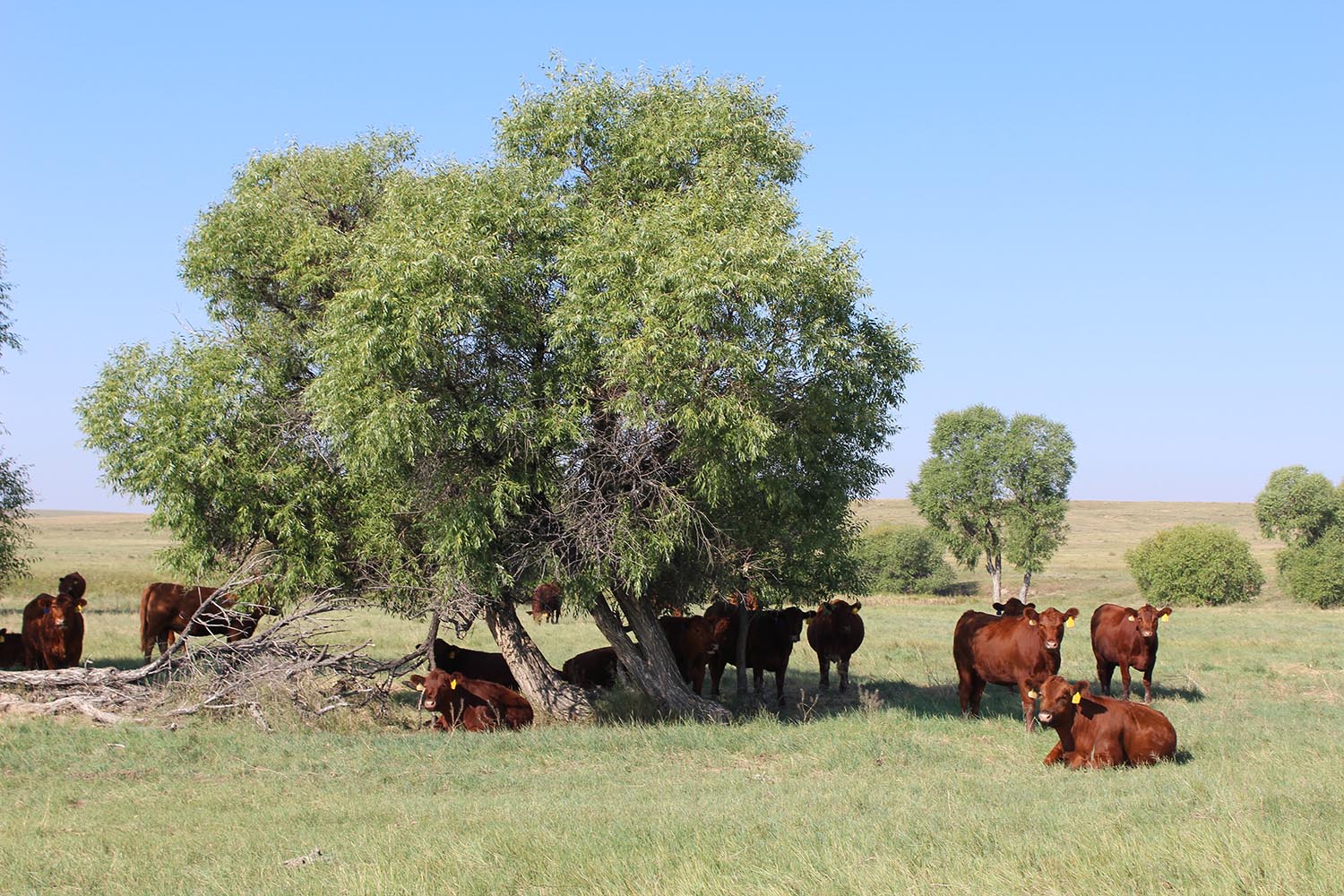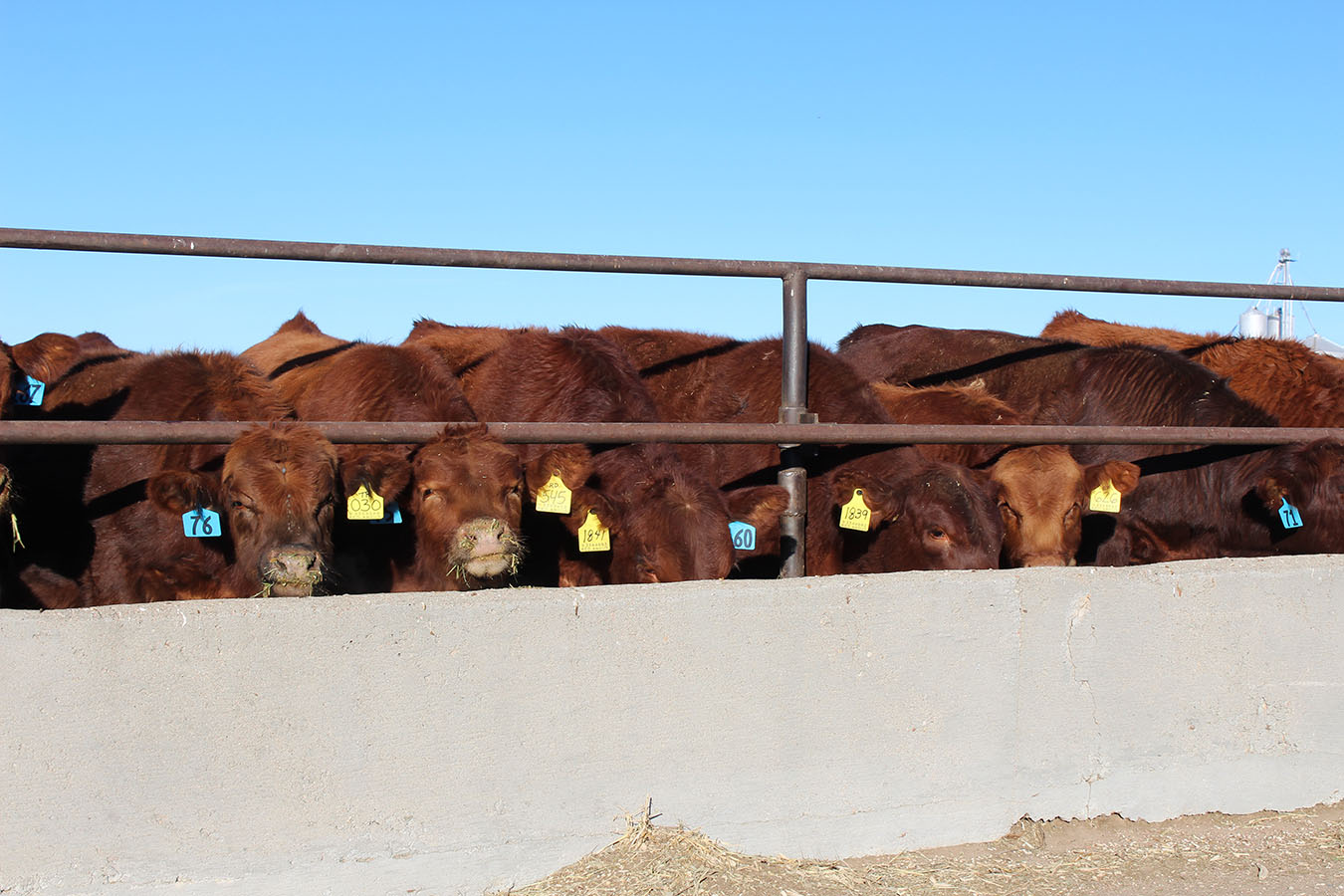Croissant Red Angus
Meet Croissant Red Angus
Describe your operation
We raise 250-300 head of registered Red Angus cows in Northeastern CO, and sell 80-90 yearling bulls in our annual bull sale in March. The calves that are not chosen for the seedstock program are grown in our small feedlot along with other calves purchased from area ranchers that have used Croissant Red Angus bulls. This allows us to collect data on the calves to see where we need to focus to make genetic improvement. In addition to the work on our ranch, our commitment to improve the beef industry is evident by working with organizations that are dedicated to advancement through science-based research and education of consumers. Larry served on the Red Angus Board of Directors from 2000-2006, Kevin served on the Red Angus Board of Directors from 2010-2018. Both Jean and Sallie have been active members of the Weld County CattleWomen for many years. Sallie served as the president of the Colorado CattleWomen from 2015-2017, and is currently a director for the Colorado Beef Council and Federation of State Beef Councils.
How long has your operation been in business (and if applicable, how many generations have been, or are, involved):
The family has had Red Angus cows since 1982. We have changed and grown over the years, now encompassing 3 generations.
How has technology changed how you do business:
All technology we use is used to gain efficiencies and reduce our environmental footprint. By improving the genetics of the cattle we are able to produce more beef with fewer inputs. Some examples of technology we use include collecting DNA on the calves before they turn a year old. This is used to predict how they might perform in a feedyard or how their off-spring might perform- will they have a low birthweight or gain weight fast? Will they have a lot of marbling in the meat? These help us make choices with each of the animals.
Describe a typical day:
Different seasons each bring different requirements and dictate what the main priority of the day is. During calving season we check cows to ensure they aren’t having problems calving several times throughout the day and night. If it is really cold, newborn calves need help getting warm and dry so we have to be ready to step in if needed. During this time of year checking the cows & calves, feeding and breaking ice are the priority. We also have cattle in the feedyard pens that need fed and checked at the same time every day. A schedule is important to maintain a low stress environment for the cattle. In March we also have our bull sale. We spend several months leading up to it getting ready- taking data, pictures, video, and marketing. The bull sale comes during calving season, so we have to ensure we have adequate help to keep an eye on the cows & calves, feed the cattle in the feedyard, and prepare for the bull sale. Summer is our slow time of year. Cattle are grazing in the pasture and there isn’t ice to chop. We do need to check cattle daily to ensure everyone is healthy and they have fresh water and mineral. We have a lot of fence to repair every year as well. Before moving cattle to a new pasture the fence needs fixed as wildlife and tumbleweeds have a way of causing problems. Come fall we will wean the calves and pregnancy check the cows. We only keep cows that are pregnant as grass is limited and feed is expensive over the winter. They have to earn their feed, and the only way to do so is to wean a healthy calf every year. Once the calves are weaned they may go back to the pasture for a couple months or straight to the feedyard, depending on grass. If we had a hot, dry summer grass may be in short supply and the cows get it, calves will get fed a nutritionally balanced diet in the feedyard. During all of this there are many other tasks that need completed, all after the cattle are checked.
Has your ranch received any special honors?
- 1999- Outstanding Seedstock Producer awarded by Colorado Cattlemen’s Association
- 2000- Nominated for the Seedstock Producer of the Year to Beef Improvement Federation
- 2007- Outstanding Conservationists awarded by the West Greeley Conservation District honored Croissant Red Angus for outstanding dedication and commitment to natural resource conservation in the Upper South Platte Watershed.
- 2007- Red Angus Breeder of the Year in recognition of outstanding contribution in genetic breeding by the Red Angus Association of America.
- 2008- Seedstock Producer Roll of Excellence awarded by Beef Improvement Federation
- 2017 Red Angus Pioneer Breeder Award was presented to the family during National Red Angus Convention. This award recognizes long-time members of the Red Angus Association who over the years have maintained the quality and excellence of their herds through diligent breeding practices, always keeping Red Angus cattle at the forefront of their breeding programs.
What is your favorite part about being in the cattle business?
The people are amazing. It is probably the only business left where a handshake and honor drive the business.What challenges do you face in the cattle industry?
Misinformation is a big challenge for much of agriculture. Many people do not understand how cattle are raised or how they are a big part of the ecosystem. Cattle are upcyclers, meaning most of what cattle eat is not edible to people and they are able to convert low quality feed to a high quality protein for us. In addition, cattle’s grazing maintains the range in good condition and provides habitat essential to many birds and other wildlife. Wildlife also uses water sources that are created for livestock.
What message would you like consumers to hear?
Croissant Red Angus
Briggsdale, CO
COW/CALF RANCH
Cows are bred and calves are born and raised every year on cow-calf farms and ranches, spending time grazing on grass pastures within sight of their mothers.








